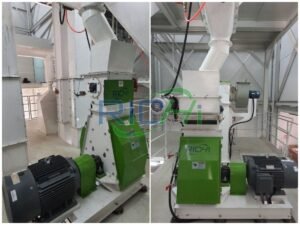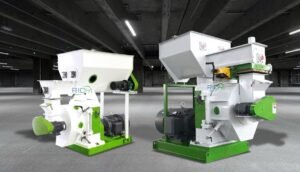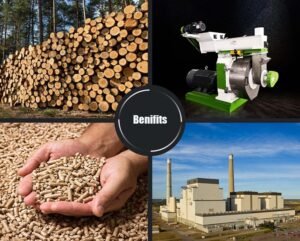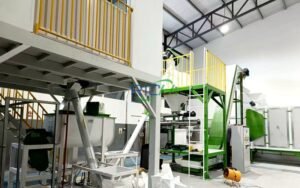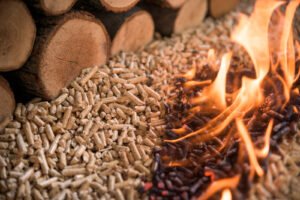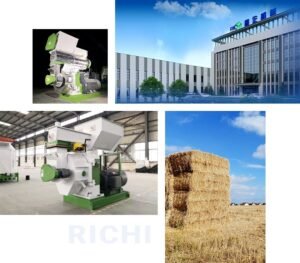
As global demand for renewable energy sources continues to rise, wood pellets have gained prominence as a viable alternative to fossil fuels. The United States, endowed with abundant forest resources and robust infrastructure, offers an attractive location for establishing wood pellet production facilities. This article provides an in-depth analysis of the costs associated with constructing a 10 tons per hour (t/h) wood pellet plant in the United States, considering various factors that influence the overall investment.
Factors Influencing Costs
Several key factors impact the total cost of establishing a 10 t/h wood pellet plant:
- Location: Geographical placement affects expenses related to land acquisition, labor, raw material access, and logistical efficiency.
- Raw Material Supply: Proximity to stable wood sources significantly influences operational costs and supply chain resilience.
- Technology and Equipment Quality: Choosing between standard and premium equipment affects initial investment and long-term operational efficiency.
- Level of Automation: The extent of automation in production processes influences upfront costs and ongoing operational expenses.
- Environmental Regulations: Compliance with local and federal environmental standards adds to project costs.
- Energy Costs: Electricity and other energy sources required for plant operations vary by location.
Related post: Wood Pellet Production Line
Breakdown of Costs
Let’s break down the costs associated with establishing a 10 t/h wood pellet plant:
- Land Acquisition and Site Preparation
- Rural Areas: $5,000 – $20,000 per acre
- Industrial Zones: $50,000 – $250,000 per acre
- Approximate land requirement: 5-10 acres
- Estimated Range: $25,000 – $2,500,000
- Building and Construction
- Basic Structure: $50 – $100 per square foot
- Advanced Facilities: $100 – $200 per square foot
- Estimated for a 50,000 square feet facility
- Estimated Range: $2,500,000 – $10,000,000
- Production Equipment
- Includes raw material handling, drying, grinding, pelletizing, cooling, screening, packaging, dust collection, and automation systems.
- Estimated Range: $4,000,000 – $8,000,000
- Utilities and Infrastructure
- Includes electrical systems, water supply and treatment, fire protection, and compressed air systems.
- Estimated Range: $850,000 – $1,800,000
- Environmental Control Systems
- Includes emissions control equipment and wastewater treatment.
- Estimated Range: $700,000 – $2,000,000
- Storage and Logistics
- Includes facilities for raw material storage, finished product silos, and truck loading systems.
- Estimated Range: $900,000 – $1,900,000
- Licensing and Permits
- Includes environmental permits, building permits, and operational licenses.
- Estimated Range: $65,000 – $270,000
- Initial Working Capital
- Includes raw material inventory and operating expenses for the initial months.
- Estimated Range: $1,500,000 – $3,000,000
- Professional Services
- Includes engineering, design, legal and consulting fees, and project management.
- Estimated Range: $450,000 – $1,200,000
- Training and Staffing
- Includes recruitment, training programs, and initial staffing costs.
- Estimated Range: $450,000 – $1,000,000
- Contingency Fund
- Recommended to allocate 10-15% of the total budget for unforeseen expenses.
- Estimated Range: $1,200,000 – $3,500,000
Total Investment Range
Based on the detailed breakdown, the total investment for constructing a 10 t/h wood pellet plant in the United States can be estimated as follows:
- Low-End Estimate: Approximately $12,640,000
- High-End Estimate: Approximately $35,170,000
A more typical range, considering moderate automation and standard equipment, might fall between $18 million and $25 million.
Additional Considerations
- Financing Costs: Interest and financing fees should be factored into the overall cost.
- Location-Specific Incentives: Some states or regions offer tax incentives or grants for renewable energy projects, potentially offsetting initial costs.
- Scale Economies: Larger capacities may offer better cost efficiency per ton of production.
- Technology Advancements: Investing in advanced technology can increase upfront costs but lead to long-term savings and improved product quality.
- Raw Material Contracts: Securing long-term contracts for wood supply can impact initial and ongoing expenses.
- Market Demand: Ensuring a stable market for produced pellets is crucial for project viability.
Strategies for Cost Optimization
To optimize investment in a wood pellet plant:
- Strategic Location Selection: Balance land costs with proximity to raw materials and target markets.
- Efficient Plant Design: Optimize layout for maximum operational efficiency.
- Energy Efficiency: Invest in energy-efficient equipment to reduce long-term operational costs.
- Phased Implementation: Consider phased construction to spread investment over time.
- Local Partnerships: Collaborate with local forestry operations or wood processing facilities for raw material supply.
- Government Incentives: Explore available incentives for renewable energy projects.
- Technology Selection: Evaluate technology options to balance upfront costs with long-term benefits.
Conclusion
Investing in a 10 t/h wood pellet plant in the United States represents a substantial financial commitment, with costs ranging from approximately $12 million to $35 million. Despite the initial investment, the growing demand for renewable energy and the established wood pellet market in the U.S. present promising prospects for long-term returns.
For entrepreneurs and companies considering such a venture, thorough due diligence is essential. This includes comprehensive market analysis, detailed production planning, and a clear understanding of regulatory requirements. Engaging with industry experts, equipment suppliers, and potential partners can provide valuable insights and mitigate risks associated with the project.
Furthermore, ongoing operational costs, including raw material prices, energy expenses, and market dynamics, will influence the plant’s profitability over time. With careful planning, strategic decision-making, and a focus on efficiency and quality, establishing a wood pellet plant can be a rewarding endeavor in advancing sustainable energy production in the United States.
